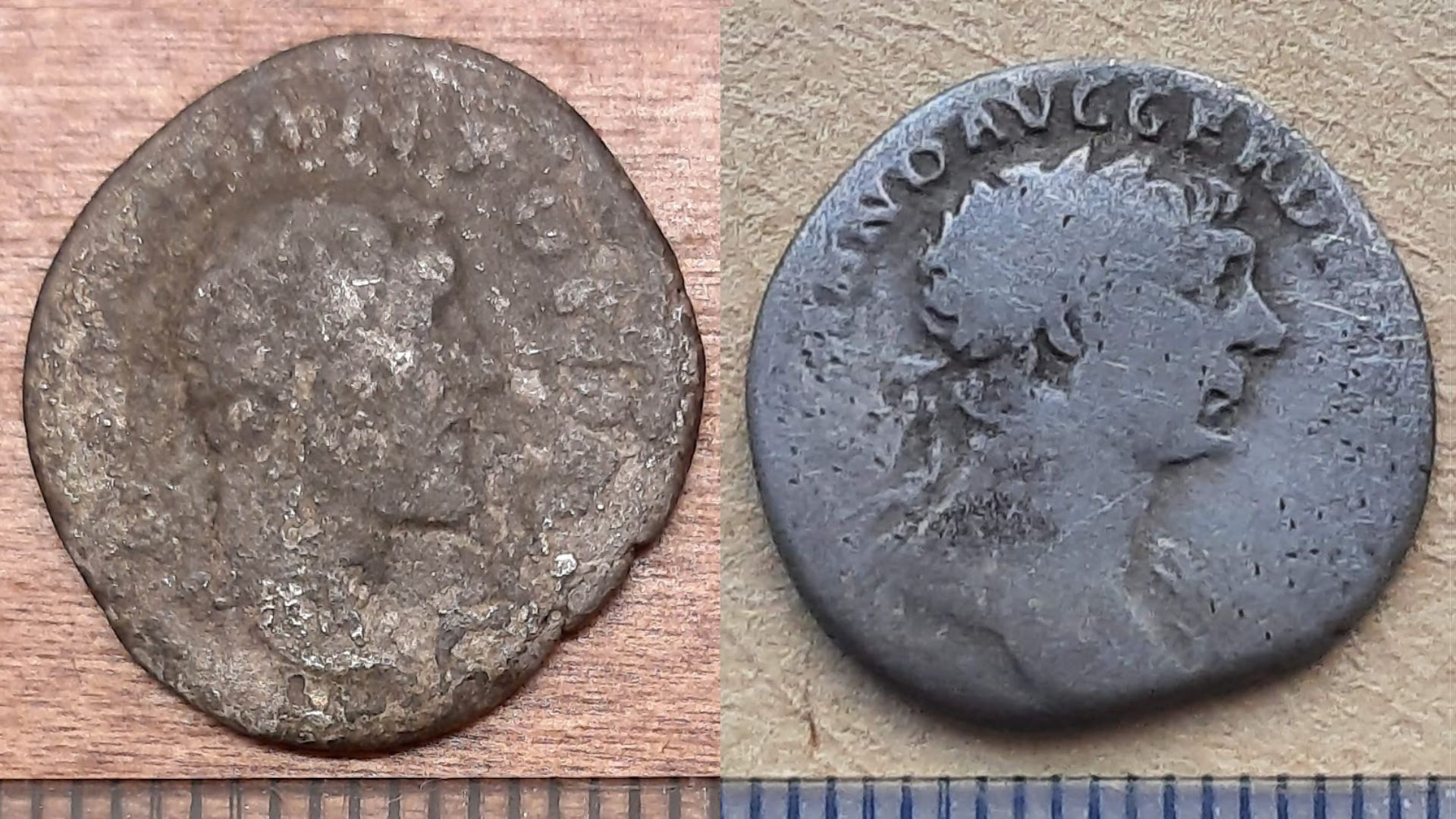Mystery of Roman coins discovered on shipwreck island has archaeologists baffled
Two silver coins minted in during the Roman Empire have been found on a remote and uninhabited island in the Baltic Sea. Archaeologists have no idea how they got there.

Archaeologists are baffled but excited by the discovery of two silver coins from the Roman Empire on a remote island in the Baltic Sea, halfway between Sweden and Estonia.
No clues reveal how the coins got there, but they may have been left by Norse traders, lost in a shipwreck or brought there on a Roman ship that voyaged to the far north.
Johan Rönnby, an archaeologist at Södertörn University in Stockholm, was part of the team that found the coins with metal detectors in March, at a beach site marked by old fireplaces on the island of Gotska Sandön.
"We were so happy," he told Live Science. "We have this site, but we don't know what it is. But now that we have the coins there, it makes it even more interesting to continue to excavate it."
Roman coins
The two silver coins found on the island are both Roman "denarii" — one from the reign of the emperor Trajan, between A.D. 98 and 117, and the other from the reign of the emperor Antoninus Pius, between A.D. 138 and 161.
They each weigh less than an eighth of an ounce (4 grams) and would have represented about a day's pay for a laborer when they were minted.
Denarii were the standard coin of ancient Rome, and their name survives today in the word for "money" in several Latin-based languages, such as "denaro" in Italian and "dinero" in Spanish.
Get the world’s most fascinating discoveries delivered straight to your inbox.
Rönnby said coins from the Roman Empire could have stayed in circulation for a long time, because the silver they contained always remained valuable; and they might have been brought to Gotska Sandön by Norse traders who had taken shelter there from storms at sea.
But it's also possible they were carried there by survivors from a shipwreck: The waters around the island are notoriously dangerous, and the area is littered with wrecks, he said.
Another possibility is that the coins were taken to Gotska Sandön by Romans on a Roman ship, though no records of such a voyage into the Baltic exist.
"It's not likely to be a Roman ship," Rönnby said. "But you have to consider also that the Romans were sailing up to Scotland and so on, and that there were Roman authors at that time writing about the Baltic area."
Baltic island

Roman coins have also been found on the larger island of Gotland about 25 miles (40 kilometers) to the south, but that was perhaps to be expected because it was the location of several towns. Gotska Sandön, however, has no towns or villages.
Gotska Sandön — meaning "Sand Island" — is uninhabited today but was home to lighthouse keepers in the 19th century. Before that it was known as a place of shipwrecks and as a haunt for pirates, Rönnby said.
Archaeologist Daniel Langhammer, who oversees cultural heritage on Gotska Sandön for Gotland County, told Live Science that the new finds echoed claims by a 19th-century lighthouse keeper that he'd found a Roman coin on the island.
But the mystery of how the coins arrived might never be solved, he said. "We just don't know how they got there."
The remote island was also once frequented by seal hunters — seal hunting is now forbidden, but the seals are still there — and by fishers during the summer months, he said.
Rönnby and his colleagues, including Sabine Sten, an osteologist at Uppsala University, will return to the site later this year. They hope eventually to reconstruct the history of the remote island.
Tom Metcalfe is a freelance journalist and regular Live Science contributor who is based in London in the United Kingdom. Tom writes mainly about science, space, archaeology, the Earth and the oceans. He has also written for the BBC, NBC News, National Geographic, Scientific American, Air & Space, and many others.


